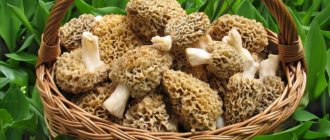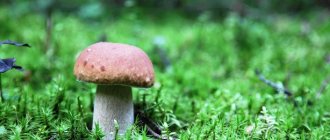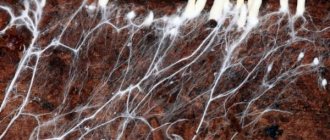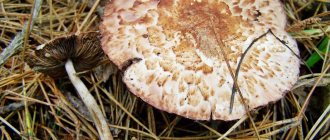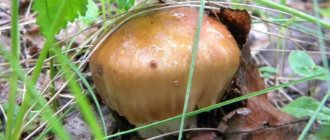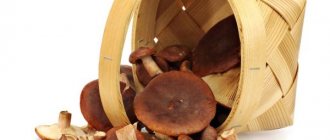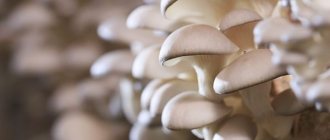Fungi are human parasites
Fungi are parasites of humans and animals, their structure and reproduction.
There are about 100,000 species of mushrooms, varying in appearance and structure. Among fungi there are microscopically small and giant organisms. The lifespan of mushrooms ranges from several days to tens of years.
Fungi are common in all geographic areas of the Earth; in forests and fields, in soil and water, on the walls of houses and in the bodies of plants and animals.
Fungi are heterotrophs (i.e. they need organic carbon sources) with an absorptive type of nutrition. Digestion is extracellular, carried out with the help of enzymes secreted externally, which ensures the absorption of nutrients by the entire surface of the body by osmosis.
Mushrooms are aerobes; only some of them, such as yeast, can obtain energy during fermentation. Some settle on the dead remains of plants and animals (saprotrophs), others feed on living organisms (parasites), and others (symbionts) participate in the creation of two important symbioses - mycorrhizae and lichens.
Parasitic fungi have a small number of enzymes and therefore can only infect certain types of plants and animals, and sometimes only certain varieties of them. Such confinement to strictly defined substrates is called specialization.
Micro- and macroparasites
Parasitic fungi are divided into 2 main categories.
- Microparasites that reproduce inside the body of their host or in its cells. They belong to the class of chytridiomycetes. Found in algae, other fungi, invertebrate animals, and on the roots of land plants.
- Macroparasites that grow in the body of their host, but reproduce using special forms. Over time, they leave the host's body. This category includes representatives such as ascomycetes (for example, ergot), deuteromycetes, oomycetes (phytophthora), basidiomycetes (tinder fungus).
Parasitic fungi: examples
Among fungi there are obligate and facultative parasites. Obligate parasites, such as powdery, rust and smut fungi, are highly specialized, have a small host range, and require a specific set of nutrients. Fungal hyphae enter the plant through wounds, stomata, or directly through the cuticle and epidermis. Here the hyphae, branching, move along the intercellular spaces or secrete pectinase enzymes, which destroy the intercellular substance, clearing the way for the fungus through the plant tissue.
To penetrate living plant cells and absorb food from them, suckers are formed on the hyphae - haustoria, which penetrate the cell without killing it or destroying the plasmalemma. The life of the parasite depends on the lifespan of the host. Their development cycles are strictly coordinated with the life of the owner. By the time the host dies, the fungus has time to form stable, usually overwintering, spores.
Facultative parasites are saprotrophs that only temporarily switch to parasitism. Unlike obligate species, they often cause the death of the host and then live saprotrophically on dead remains. They do not form haustoria, but with the help of pectinases they destroy the plant tissue, turning it into a mess of individual cells (soft rot), with the help of cellulase they dissolve the cell walls, and then absorb the contents of the cell. Facultative parasites are not as highly specialized as obligate parasites. For example, the potato fungus late blight affects many plants of the nightshade family.
Parasitic fungi are an ecological group that unites about 2 thousand species of fungi, mainly related to ascomycetes and deuteromycetes. Based on the nature of the pathogen-organism relationship, two groups of diseases are distinguished - mycoses, or fungal diseases that develop as a result of direct parasitism of fungi (dermatomycosis, deep mycoses); mycotoxicosis, or fungal poisoning associated with the production of toxins by fungi; Such poisoning is caused by eating food or feed on which toxic fungi have developed.
About a thousand species of fungi parasitize animals and humans, causing various diseases of the skin, nails and hair. Mycoses are very dangerous diseases, as they are practically not diagnosed and are difficult to treat. The likelihood of infection by pathogenic fungi increases with decreased immunity.
Human diseases caused by pathogenic fungi, so-called mycoses, are becoming more common and more severe. About a fifth of the world's population suffers from athlete's foot. Each person constantly loses the thinnest flakes of skin, which, with mycoses of the feet, can contain fungal hyphae.
When landing on the feet of barefoot healthy people, the pathogen may not develop immediately; its rudiments settle on socks or shoes and cause infection under favorable conditions (humidity, heat), which very often occur between the toes. Other mycoses (candidiasis, aspergillosis, mucormycosis, etc.) are also of exogenous origin; some enter the human body through a wound, and most through the respiratory route (by inhalation).
Treatment is carried out with antifungal drugs. Mycoses of the feet, with a high risk of infection (in public bathing areas), can be prevented by personal hygiene and disinfection of the feet. Walking barefoot creates unfavorable living conditions for pathogens; this practice provides some protection against the “fungus.”
Of the entire variety of fungi, only about 100 species are pathogenic to humans. These are microscopic fungi, larger than bacteria. Unlike bacteria, they are well protected from environmental factors and adapt well.
Fungal spores can cause mycoallergosis, causing runny nose, cough and even bronchial asthma in people predisposed to allergic diseases. In particularly weakened people, such disputes can also be caused by a fungal infectious process - mycosis: inflammation of the ear (otitis), paranasal sinuses (sinusitis), bronchitis, pneumonia. Depending on the type of fungi, the pathological infectious process is called aspergillosis, penicillosis, or mucorosis.
Thus, mushrooms can cause a wide variety of pathologies in humans - infection (mycosis), allergies (mycoallergosis), chronic poisoning with their toxins (mycotoxicosis) and acute poisoning with poisonous mushrooms (mycetism).
In addition, there is another important human condition associated with mushrooms - mycocarriage - carriage of fungi in the human body, which does not manifest itself in any way and is not accompanied by an infectious process.
Mycocarriage is possible only in relation to the yeast fungi Candida. The carriage of mold fungi in the human body is impossible; their detection in humans indicates a pathological process.
Fungi of the genus Candida live only in humans - on the mucous membranes of the oral cavity and intestines. Humans are the main “reservoir” of this type of mushroom in nature. Man and mushroom coexist quite peacefully: while a person has a strong defense system, the mushroom “sleeps” without showing itself in any way. This condition is “mycocarrier” or “candidate carrier”.
If a breakdown of the defense system occurs in the human body or there is age-related physiological immaturity of the immune system, the fungus can manifest itself quite aggressively and cause an infectious process - “candidiasis”
It is also necessary to remember about possible skin diseases caused by fungi transmitted from animals. These diseases can also be transmitted from sick children. These are also molds, but their “reservoir” is domestic animals and humans. They cause diseases such as microsporia, which affects the scalp and smooth skin, trichophytosis, the pathogens of which affect nails, hair, and smooth skin, and epidermophytosis, which affects nails and smooth skin.
- Microsporia - lichen - develops in a child upon contact with a sick animal or a sick child. At the point of contact (arms, face, legs), one or more rounded lesions appear, rapidly growing around the circumference, clearly defined, with raised, scaly edges. Sometimes the lesions look like several rings inserted into one. In the area of the scalp, similar lesions are accompanied by hair damage and breakage in the form of “stumps”. The lesions merge and quickly grow in concentric circles.
- Trichophytosis is also characterized by focal and deeper skin lesions. Lesions on the scalp are accompanied by hair breakage at the root. This disease is popularly called “ringworm”. With trichophytosis, the skin of the feet and nails can also be affected.
- Athlete's foot is a disease with a characteristic lesion of the skin of the feet in the form of peeling and weeping, accompanied by severe itching. In case of nail disease, there is marginal involvement of the nail plate without damage to the periungual fold. This distinguishes athlete's foot and trichophytosis from candidiasis.
It should be noted that in zones with a hot climate (countries of Africa, North and South America, Southeast Asia) there are molds in the soil that are particularly dangerous species, since they can cause disease at the first contact with a person.
Based on the name of the fungi and the areas of their distribution, these diseases are called North American and South American blastomycosis, histoplasmosis, etc. These fungi reproduce by spores, like other filamentous (mold) fungi. During dust storms, spores are carried through the air and, entering the upper respiratory tract, cause an infectious process.
The severity of the disease depends on the body’s defenses: a person with a strong immune system can get sick in the form of acute respiratory disease (ARI), while weaker ones can develop bronchitis, pneumonia and even more severe forms of the disease.
Sometimes fungi can penetrate damaged skin of the feet from the soil when walking barefoot, causing local skin lesions and enlarged lymph nodes. Sometimes spores found on plant leaves can enter the oral cavity and cause damage to the digestive tract.
In plant life: Positive: Fungi play an important role in the cycle of substances in nature - they decompose organic substances into inorganic substances, which can be consumed by plants. Soil fungi play a huge role in soil formation - they enrich its fertile layer. Mycorrhiza, which is formed by fungi and plants, has a positive effect on the growth and development of plants.
The fruiting bodies of cap mushrooms are consumed by many animals: mammals, rodents, squirrels, badgers, wild boars, moose, roe deer, birds, land mollusks and many insects.
Negative: Some of the fungi that we studied, such as polypore, late blight, ergot, and smut, cause diseases of plants and trees.
Some mushrooms produce toxic substances that can seriously or fatally poison animals.
In human life:
Positive: There are 100 known species of edible mushrooms, but about 40 are used as food.
Some of them are artificially grown. Antibiotics are obtained from mold fungi - medicines that are used for many diseases.
Ergot is used to obtain a substance that inhibits the growth of malignant tumor cells. Yeast is used in baking, winemaking, brewing and alcohol production; special yeast is used to make kefir. Among the molds there are those that are used in the production of hard cheeses.
Species of fungi that parasitize insects are used to control pests.
Polypores
Parasitic fungi on trees are very common. They can be of different sizes and colors. One of the most famous parasitic fungi among them is the tinder fungus. Such organisms belong to a non-systematic group of the basidiomycetes department. These are parasites that most often develop on wood. Sometimes they settle on the soil. Their distinctive feature is the tubular hymenophore. Polypore fungi have the following fruiting bodies: prostrate, cap-footed (sessile). The consistency of their pulp can be fleshy or hard (corky, woody, leathery). Previously, this group of parasitic fungi was considered as systematic, belonging to the family Polyporaceae, but after the 50s of the 20th century this interpretation was considered artificial. Today, experts consider the concept of “tinder fungi” to refer to the morphology of the parasite.
They destroy wood, thereby causing enormous damage to green spaces. Polypore spores penetrate the plant through wounds on the bark, frost holes, sunburn, and damage to branches. They develop quite quickly, and the mycelium penetrates all tissues of the tree. From the moment of infection by spores to the formation of an adult fruiting body, depending on its type, only a few years pass. Over time, the host plants of the fungus turn into dust. They are not suitable for further processing. The wood becomes brittle and affected trees often break from strong winds.
Polypores have the shape of a hoof (semicircle). They are often arranged in the form of “shelves” one above the other. Most of these parasites form perennial fruiting bodies. Numerous spores are formed in the small tubes that are located on their lower plane. If a parasitic fungus, tinder fungus, appears on a valuable tree, it must be cut off with a sharp knife or knocked down with a stick (if it is high) and burned. An infected tree lives much shorter than a healthy one. Some parasites, such as birch chaga, are used in folk medicine.
Types of fungi and their habitats on the human body
Fungus is the same as mold. Its essence is that it gets on the human body, adapts to the environment and takes root like mold.
The fungus can live in the human body, on his body, for many decades, that is, for the entire human life.
Therefore, in the first moments of detecting the presence of a fungus, you need to immediately go to the doctor, get tested and begin treatment.
Fungi can enter the human body through:
- Water (drinking, running).
- Food (spoiled, unwashed).
If mold appears on the bread, you cannot eat it. Mold is not only on the surface, it penetrates deep into the bread. Therefore, even if you cut off the top layer where the mold was, you still cannot eat the bread itself.
- With air, dust (this is a dangerous method).
It enters the mucous membrane of the nose, throat, and, consequently, into the human body itself.
- With animal fur.
- Other untreated surfaces.
- Another man.
If a person has a fungus, then by contact with it, you can also become infected (through hugs, handshakes, bed). But if you have a wound on your body that is vulnerable to infection.
- You can independently spread different types of fungus on your body.
If you have a small infected area behind your ear, you rub it and with the same hands begin to touch your toes, and there is a cut or wound on them. Then the infection (fungus) will spread to the toes. This applies to all parts of the body.
Once in the human body, or simply on the surface of the body, the fungus adapts to the environment and takes root, which leads to the appearance of various diseases. Such as:
- Onychomycosis (fungus on the nail plate of the hands and feet).
- Mycosis is a fungus on the surface of the skin (between the toes, on the ears, on the hands).
- Ringworm also lives on the skin.
Forms even on dead tissue (if there is a tattoo).
- Visceral candidiasis is the formation of spores in the blood. This type of fungus is more dangerous than others; it can not only spread through the bloodstream throughout the body, but also take root in several parts of the body at once.
- Histoplasmos is a fungal infection of the mucous membrane. With saliva, the fungus can spread to other organs.
In this case, the dangerous carrier of the fungus is street birds (often pigeons). The fungus is found in their droppings. In warm weather, while walking outside, people often go to feed pigeons. This is where you need to be more careful. Through the air, the fungus reaches the mucous membrane of the throat.
- Candidiasis is a white coating in the mouth and tongue.
It happens in both children and adults. Can be transmitted through a kiss.
- Diseases of the gastrointestinal tract, lungs, urogenital tract. Once inside the body, fungal spores begin to immediately adapt to the environment.
They take root in organs and are difficult to treat. In addition, they cause exacerbation of chronic diseases, deterioration of well-being, and allergies.
A fungus located in any part of the body can have a detrimental effect on well-being and requires immediate treatment.
Types of prevention
- Primary - hygienic maintenance and regular disinfection of baths, saunas, showers, swimming pools, children's and medical institutions, public catering establishments, veterinary monitoring of the health status of pets, thorough sterilization of hospital equipment, instruments for examining patients, identification of occupational hazards, control of dust in the air endemic foci, etc.;
- Secondary - preventing re-infection;
- Personal - use only your own toiletries, underwear, clothes, shoes, care for skin, nails and hair, frequent washing and regular change of linen, elimination of excessive sweating and sebum secretion, prevention of injuries to the skin and nails, compliance with safety regulations, treatment of existing diseases, leading to a decrease in the protective properties of the body.
What happens to a person after infection with a fungus?
If the fungus gets on the surface of the skin, the person will feel discomfort and itching.
The body will become covered with spots. If red spots appear on the body, similar to lichen, this means that the fungus has entered the bloodstream and caused a reaction in the body. Then you need to urgently run to the doctor, take all the necessary tests, and begin treatment.
If the fungus is found on the toes, hands, or feet, the person will constantly experience itching and see a white coating.
After the fungus gets on the mucous membrane of the nose and throat, the person will begin to experience difficulty breathing, coughing, and possibly discharge of pus with sputum.
Fever, chills, and weakness are also possible.
If the fungus enters the gastrointestinal tract, the person will experience pain and discomfort in the abdomen.
It will be noticeable - loss of appetite, weakness, vomiting.
There is the presence of fungi in the air, or mold is found on the ceiling in the room, then you need to get rid of it urgently. Otherwise, they can be inhaled into the lungs, and over time cause severe pneumonia or bronchitis.
The difficulty in this case is that the symptoms are very similar, but the complications can be stronger.
A fungus that appears in any part of the body can cause the following symptoms:
- General malaise.
- If the fungus gets into the lungs, then: severe cough, heavy breathing, fever.
- If the fungus has settled in the intestines, the patient will experience severe pain, vomiting, diarrhea, and loss of appetite.
- The appearance of fungus on the skin is confirmed by spots on the body, itching, discomfort, and a white coating.
Ergot
These parasitic fungi, the names of which are familiar to every farmer, parasitize rye and various wild cereals. Ergot is also called queen horns because of the characteristic curved, hard structures that develop on the flowers of the rye ear. These growths are sclerotia of the parasite, which are oblong or triangular plexuses of the mycelium. They are black and purple in color. In some cases, they become covered with an easily erasable whitish coating. Their size is up to 3 cm in length and up to 6 mm in width. Ergot sclerotia developing on different types of cereal plants may have a different shape and size. The ovary of a flower infected with spores is destroyed over time. Instead of grains, resting stages of the fungus are formed in the ear - sclerotia, which easily overwinter until spring.
How to treat fungi in the human body
Fungus in the human body: signs and treatment
If you feel unwell, call an ambulance. After you are taken to the hospital, the doctor will carefully examine you and ask you questions.
If the doctor suspects that you have a fungus, he will refer you to undergo the appropriate tests: urine, blood (biochemical and bacteriological analysis).
After confirming the presence of fungal formations in the body, you will begin to be treated.
If the situation is difficult, they will leave you in the hospital, but no, they will send you home (to be treated at home).
Fungi need to be removed with special antifungal agents and antibiotics.
And also, simultaneously with the destruction of fungi, you need to do something about raising your immunity.
If fungi are found on the body, then you also need to use special antifungal ointments. They must also be prescribed by a doctor.
Immunity is an important opponent of fungus, as well as other diseases. It is important that it is always strong.
To remove the fungus, you must not create favorable conditions for its development and life.
The fungus needs to be treated intensively for two to three weeks.
After treatment, you need to take blood and urine tests again. If the fungus is not detected, then your body has gotten rid of it. But still, you need to constantly be on guard and keep your immunity under control.
What to do to protect yourself from fungus
If you find a fungus on your toes, this means that you are not taking care of your shoes properly. Shoes should always be kept dry and clean.
If your feet become sweaty on a bad weather or hot day, wash them and dry them.
Apply the cream to your feet frequently and keep in special salt water. Also, after coming home, wash and dry your shoes thoroughly.
If you notice mold on the ceiling, buy a special antifungal product that is sold in the store.
A few applications and the mold will leave your home.
Frequently do wet cleaning and wipe off dust. Wash all foods before eating.
Wash your hands with soap. Do not eat spoiled fruits, vegetables, and baked goods.
Keep everything under control, then you will be able to avoid such an unpleasant infection as fungus!
Spreading
It should be noted that in zones with a hot climate (countries of Africa, North and South America, Southeast Asia) there are molds in the soil that are particularly dangerous species, since they can cause disease at the first contact with a person.
Based on the name of the fungi and the areas of their distribution, these diseases are called North American and South American blastomycosis , histoplasmosis , etc. These fungi reproduce by spores, like other filamentous (mold) fungi. During dust storms, spores are carried through the air and, entering the upper respiratory tract, cause an infectious process.
The severity of the disease depends on the body’s defenses: a person with a strong immune system can get sick in the form of acute respiratory disease (ARI), while weaker ones can develop bronchitis, pneumonia and even more severe forms of the disease.
Sometimes fungi can penetrate damaged skin of the feet from the soil when walking barefoot, causing local skin lesions and enlarged lymph nodes. Sometimes spores found on plant leaves can enter the oral cavity and cause damage to the digestive tract.
Powdery mildew
Powdery mildews are ectoparasitic fungi from the order Erysiphyceae and the class Leociomycetes, causing a fungal plant disease - powdery mildew. This order contains more than 700 species and 19 genera, most of which are obligate parasites of flowering plants.
Period of plant infection and life cycle of the fungus
It is almost impossible to single out a single period or season when infection occurs, since this fungal disease affects a huge variety of different fruit-bearing plants that bloom in different seasons of the year.
Initially, when infected, a light white coating appears on the fruit and berry plant, which is mycelium, which over time forms a small drop on its surface similar to a drop of dew. The stain is initially small and can be easily erased with a finger, but then its area increases and the stem also comes under the influence of powdery mildew. Such a plant begins to wither and fall off, and then dies completely.
Causes of the disease
- A long period of rain and high humidity in the air surrounding the plant,
- Sudden temperature changes during the day,
- Densely planted plants. This problem is a big accelerator for the fungus.

